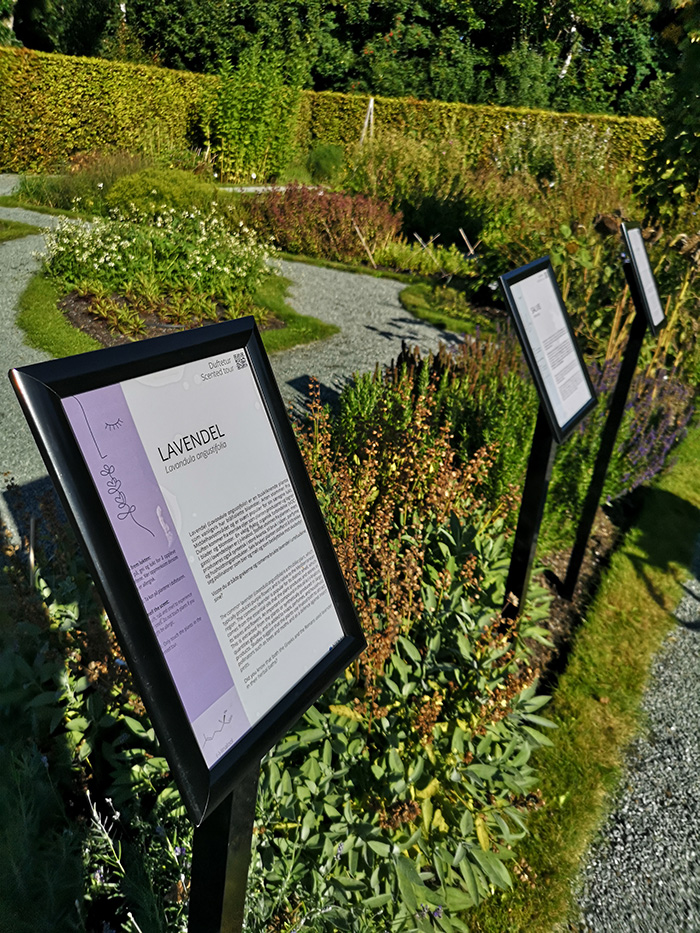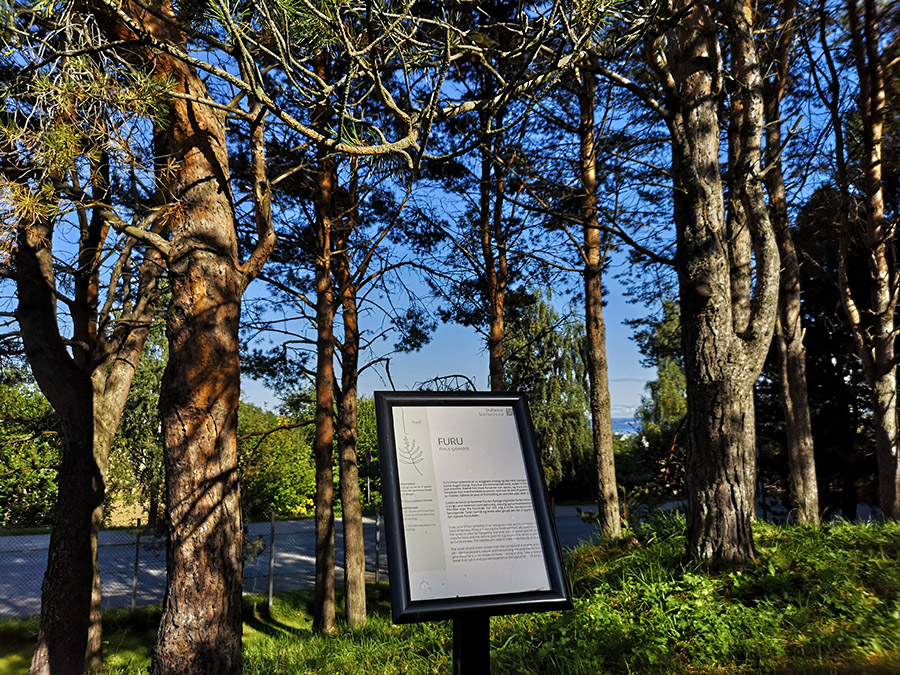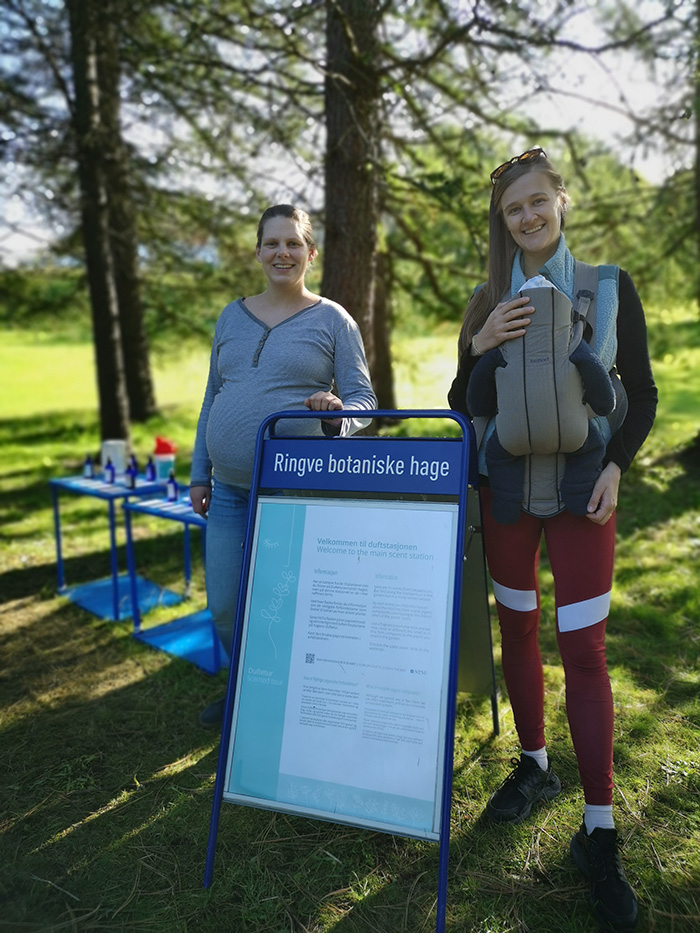Scented tour

Scented tour in Ringve Botanical Garden
The tour is accessible during April-October
In connection with Ringve Botanical Gardens´ 50
The scented tour guides the visitors through the Ringve Botanical Garden, with hands-on activities to create awareness and interest about the importance of specific chemical compounds called volatile organic compounds (VOCs) from plants. The scented trail also creates a link between the wild scents we perceive in nature, and how they are used in our everyday lives.
The scented trail consists of:
- Ten stations in the NTNU Ringve Botanical Garden where visitors can touch or rub the plants to induce their specific smells. Each plant emits a specific mixture of chemical compounds, and these compounds have variety of functions biologically, atmospherically, and even economically. Next to each plant you find exciting information about these compounds.
- In the middle of the Arboretum one finds the “main scent station” where the scents from the ten plants around the garden are gathered in one place. Visitors have a chance to spray the scent on scent sticks and compare how the more refined version of the scent from plants in the garden differs from the smell the visitors induced themselves while visiting the gardens´ different stations.

What are volatile organic compounds (VOCs)?
- Although we cannot see or feel them, we can often smell them, and we are constantly surrounded by them.
- Thousands of chemical compounds are emitted into the atmosphere by nearly everything around us – nature, humans, and products we use.
- Plants and other organisms emit a lot of chemical compounds simultaneously. However, some chemical compounds are more abundant and aromatic than others and thus create their distinctive smell.
- These chemical compounds, which evaporate easily and mix with other things in the air, are called volatile organic compounds (VOCs).
- In nature, all organisms (plants, fungi, bacteria, animals) produce VOCs and use them to "talk" with each other and protect themselves from enemies:
- Leaf-chewing insects cause plants to release VOCs that eventually repel them
- Do you know that fresh cut grass smell? That is how plants are "crying for help" using VOCs
- With the help of VOCs, flowers attract and assist pollinators such as bees to locate and recognize the flower
- VOCs also play a significant role in atmosphere:
- VOCs form greenhouse gas ozone
- Elevated concentrations of VOCs in the atmosphere extend the lifetime of another greenhouse gas, atmospheric methane
- VOCs can even cool the climate via formation of aerosol particles which reflects the suns´ radiation
- Furthermore, when aerosol particles grow large enough, they can also contribute to cloud formation
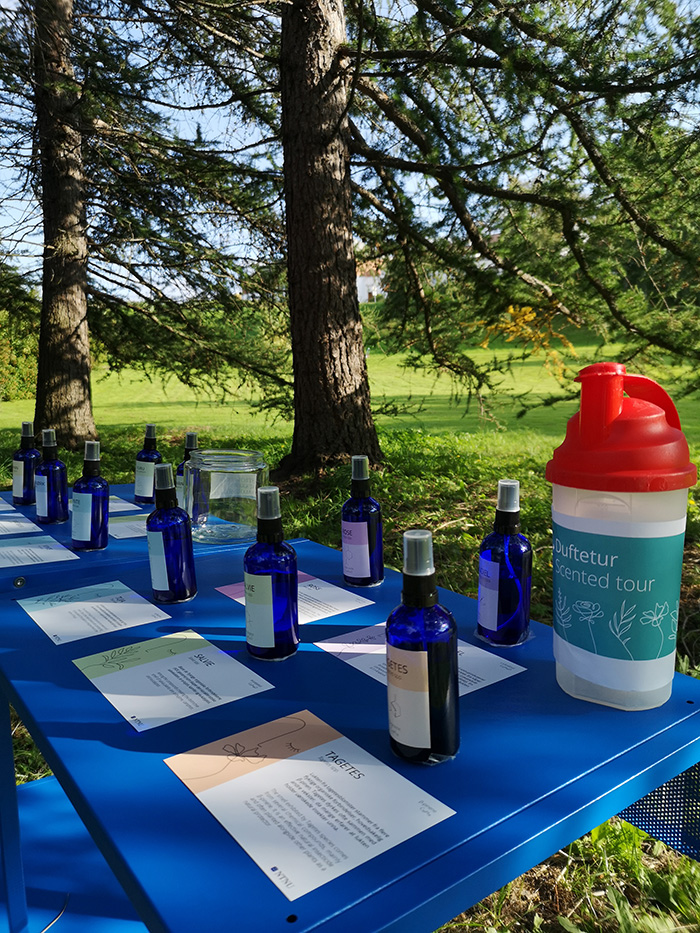
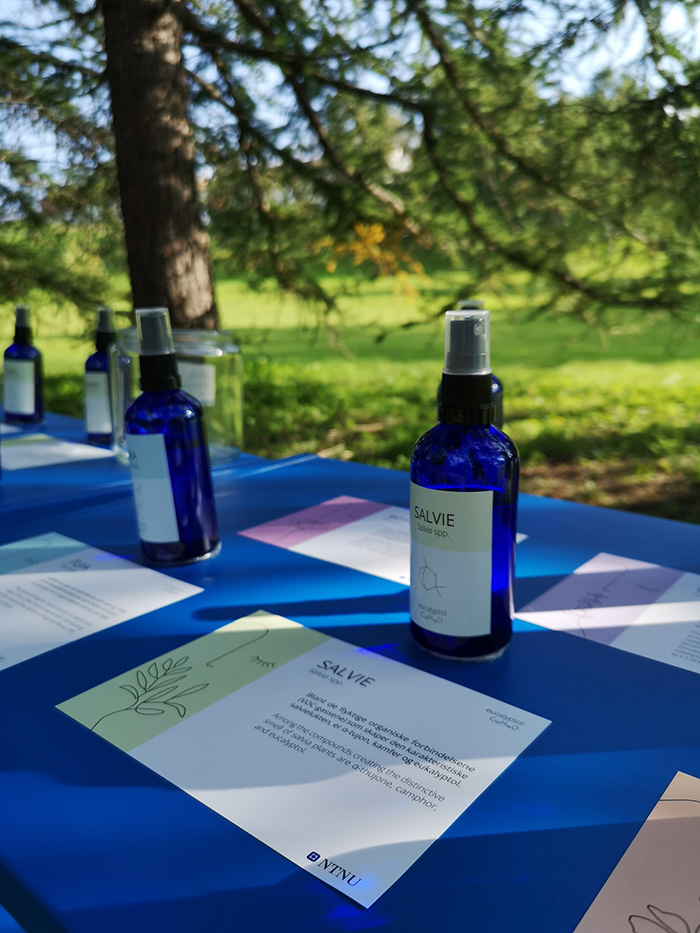
Main Scent Station in the Arboretum
People involved in project
Graphical design:
- Elisabeth Johansen (NTNU Grafisk Senter)
